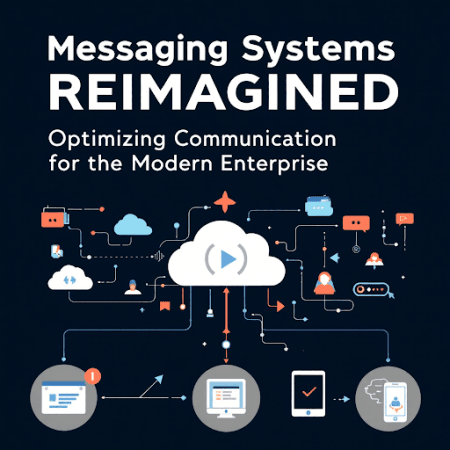
Jyothi Siva Rama Krishna Terli, a specialist in enterprise middleware optimization, explores how intelligent design and adaptive systems can revolutionize message-oriented middleware performance. With a focus on IBM MQ, his work showcases how innovation can solve persistent challenges in distributed enterprise environments.
Bridging the Messaging Gap
In today's distributed application ecosystems, communication across services must be seamless, fast, and reliable. Traditional messaging infrastructures often fall short under high-throughput, low-latency demands. By refining the foundational messaging patterns Point-to-Point (P2P), Publish-Subscribe (Pub-Sub), and Request-Reply this research delivers a new model of agile enterprise messaging. Each pattern was systematically optimized to mitigate latency, balance workloads, and improve delivery success, fundamentally elevating how systems communicate.
Precision in Point-to-Point Messaging
To reduce peak-time delays in Point-to-Point messaging, a dynamic, feedback-driven queue depth adjustment was introduced, cutting processing delays by 32%. This real-time system adapts to message flow, ensuring efficient resource use and stable performance without manual tuning
Publish-Subscribe Gets a Smart Overhaul
Pub-Sub architectures, vital for broadcasting information to multiple consumers, were refined through a dual-layered strategy. First, topic hierarchies were restructured to streamline message routing. Second, an intelligent filtering algorithm at the subscriber level minimized unnecessary content processing. Together, these techniques yielded a 27% gain in delivery efficiency, making high-volume broadcasting smoother and more scalable. This innovation is especially vital in real-time systems where speed and accuracy are non-negotiable.
Enhancing the Request-Reply Pattern
The Request-Reply pattern, which mimics remote procedure calls, was optimized for greater precision and speed. By redesigning correlation ID tracking and introducing ephemeral queue lifecycle management, the pattern became more resilient and responsive. The unique identifiers embedded routing hints, accelerating message flow. Meanwhile, predictive cleanup algorithms ensured queues did not linger past necessity. These refinements culminated in a 22% drop in response time, crucial for systems demanding instant feedback.
AI in the Driver's Seat: Dynamic Workload Balancing
The research implemented AI-driven, real-time workload balancing using a multi-factor system (throughput, latency, proximity), resulting in 44% better load distribution, reduced bottlenecks, increased throughput, and enhanced system resilience.
Predictive Monitoring: From Reactive to Proactive
Monitoring and diagnostics often lag behind actual failures, causing avoidable downtime. The introduction of machine learning-based predictive monitoring flips the script. A hybrid model combining supervised and unsupervised learning was trained on real-world data, enabling early detection of anomalies in message flow, resource usage, and system health. With a prediction accuracy of 95%, this system significantly reduced message loss incidents by 87%. The foresight offered by AI helps prevent disruptions before they ripple through the organization.
Quantifying the Gains
The compounded impact of these innovations is substantial. Pattern-specific techniques brought double-digit improvements in speed and efficiency, while system-wide changes bolstered resilience and scalability. Notably, these gains were achieved without necessitating complete overhauls many strategies required minimal modifications to existing infrastructure. From reduced latency and optimized resource utilization to proactive error handling, the architecture becomes not just faster, but smarter.
The Road Ahead: Toward Self-Optimizing Systems
While the research establishes a strong foundation, it also highlights areas for future exploration. Highly volatile workloads may challenge some adaptive mechanisms, and training AI models for new environments takes time. Nonetheless, the path forward is promising. Future directions include predictive routing based on message patterns and dynamic subscription management, envisioning middleware that continually evolves to match enterprise demands. Such advancements would usher in a new era of autonomous, intelligent communication infrastructures.
In conclusion, Jyothi Siva Rama Krishna Terli's work presents a compelling case for reengineering enterprise messaging systems through data-driven, adaptive technologies. By blending foundational techniques with cutting-edge AI applications, this research not only improves performance metrics but redefines what messaging systems can achieve in the face of modern complexity.

















